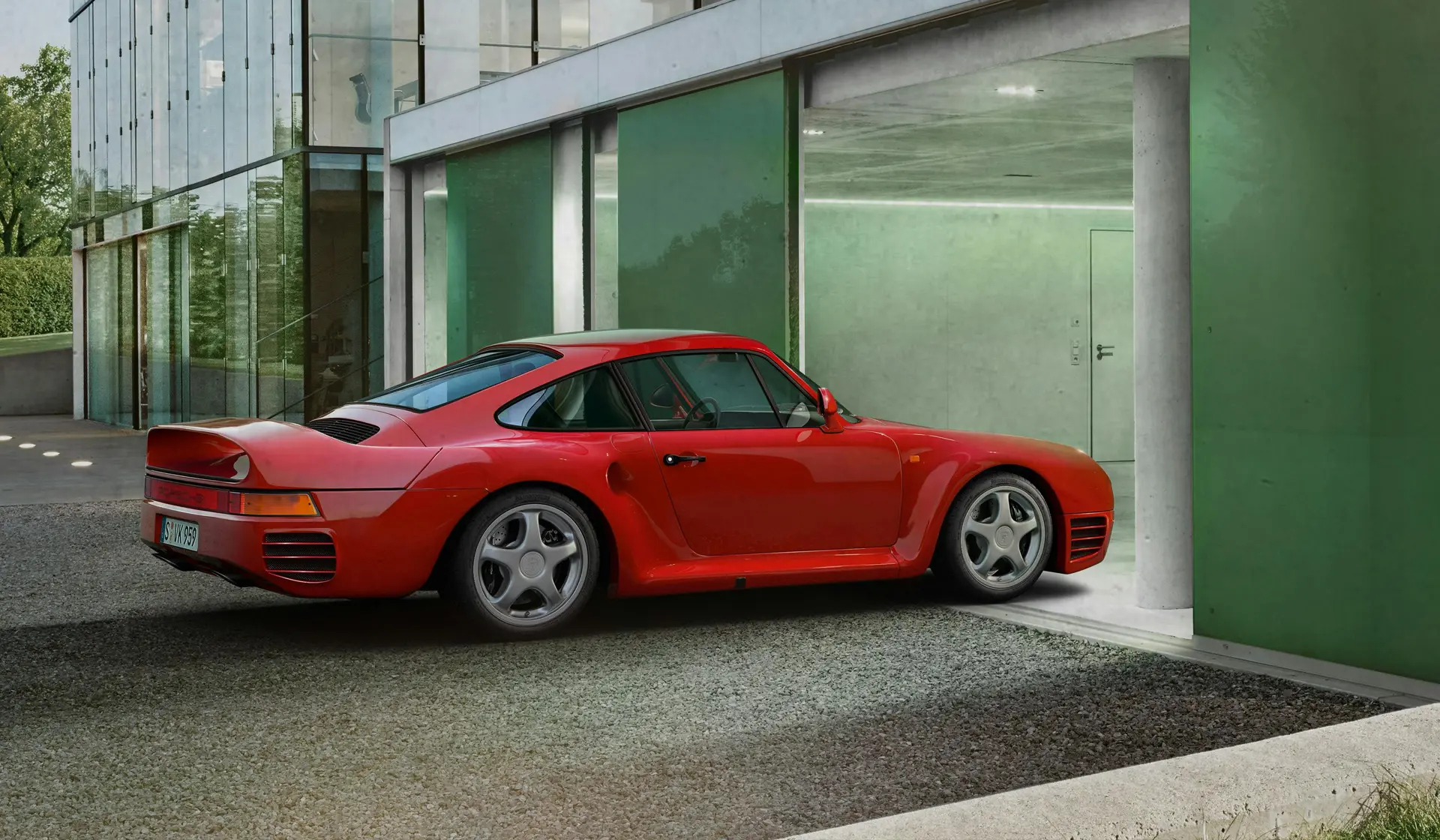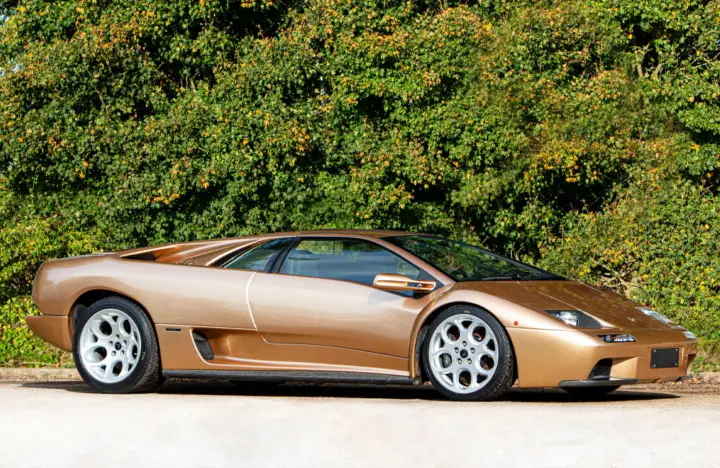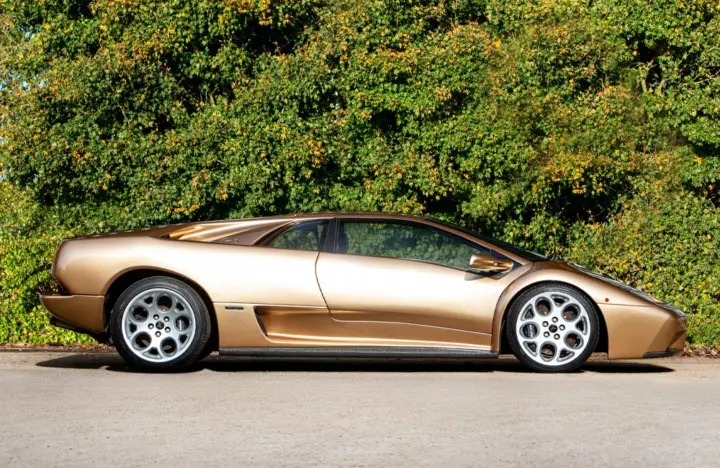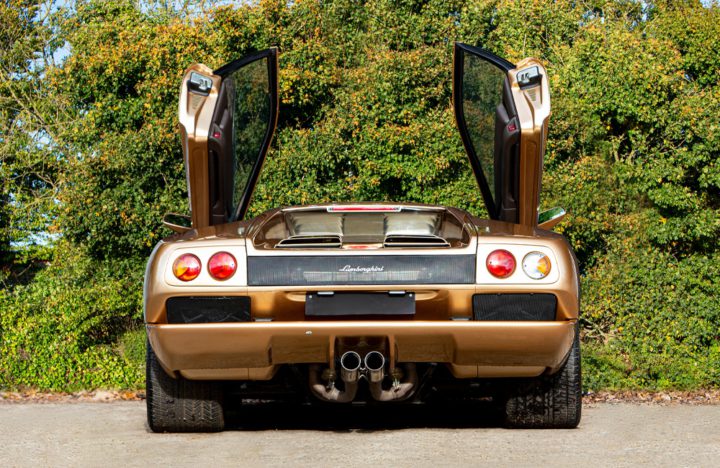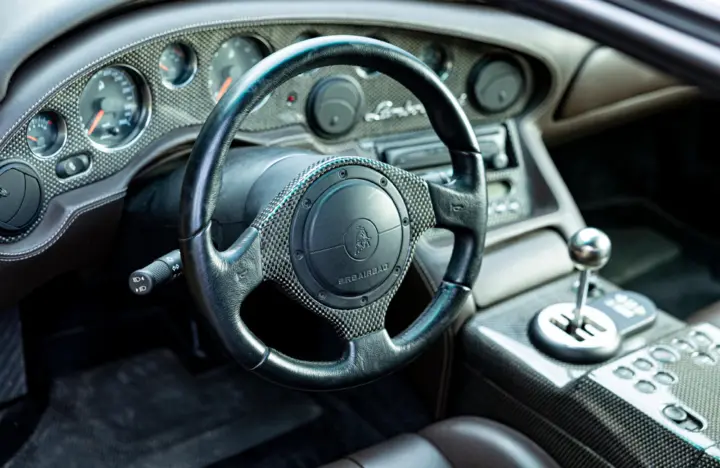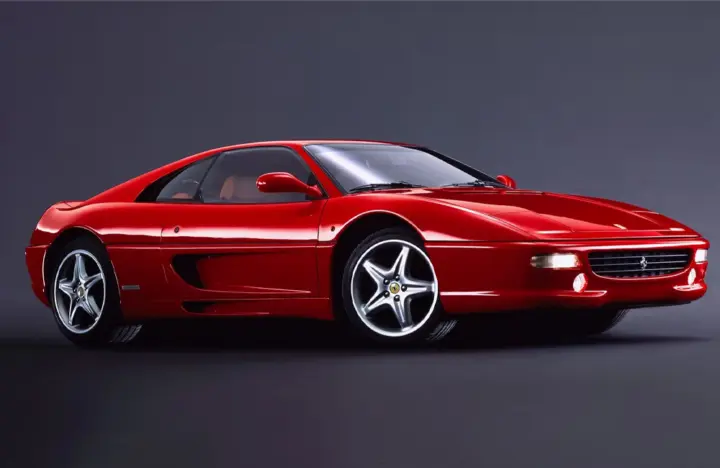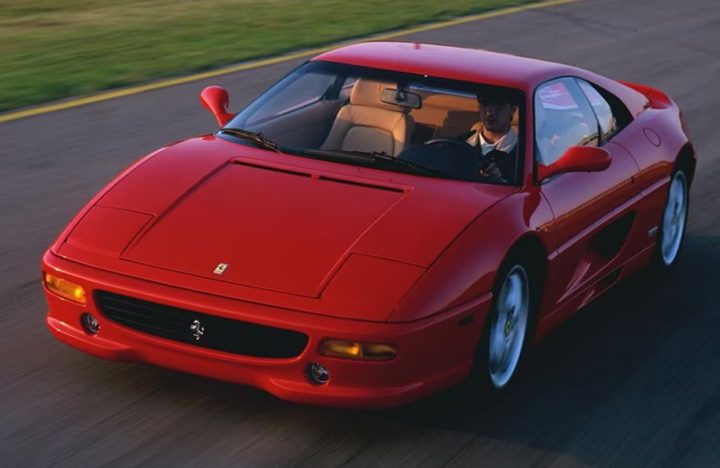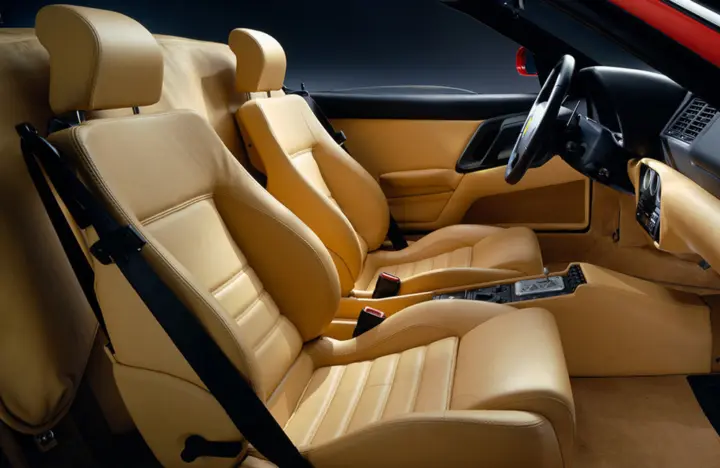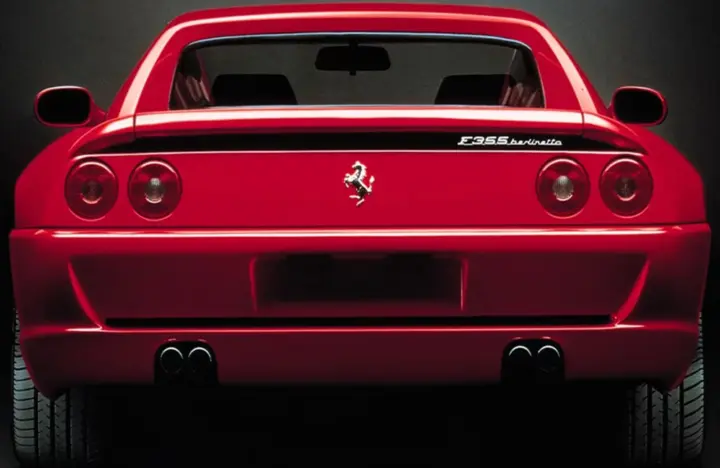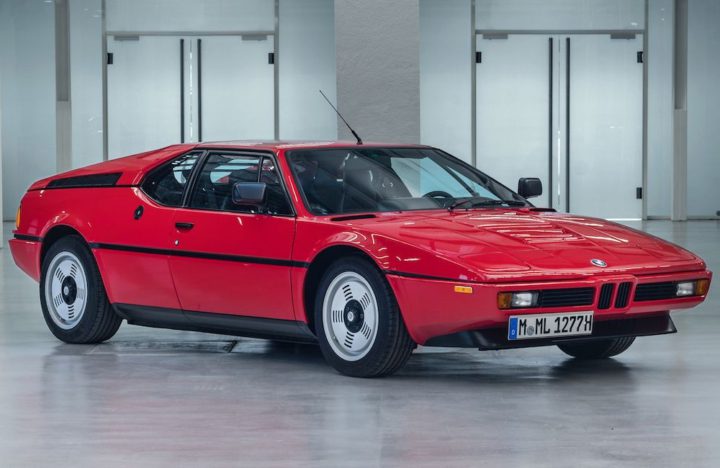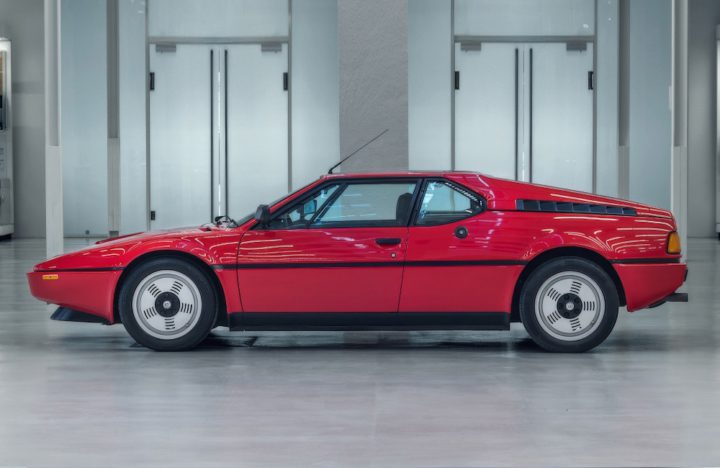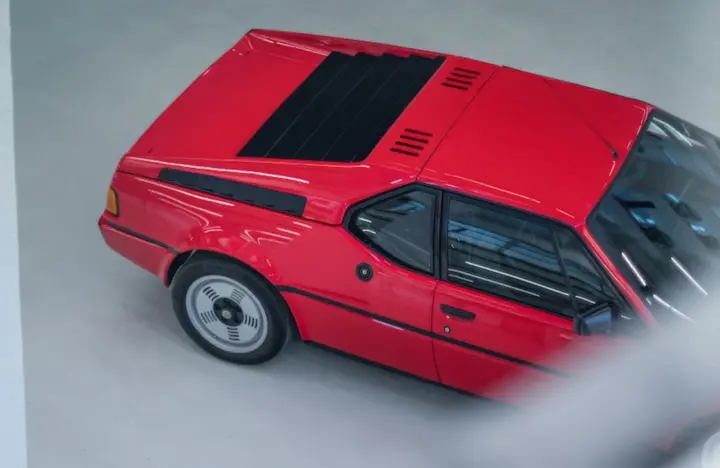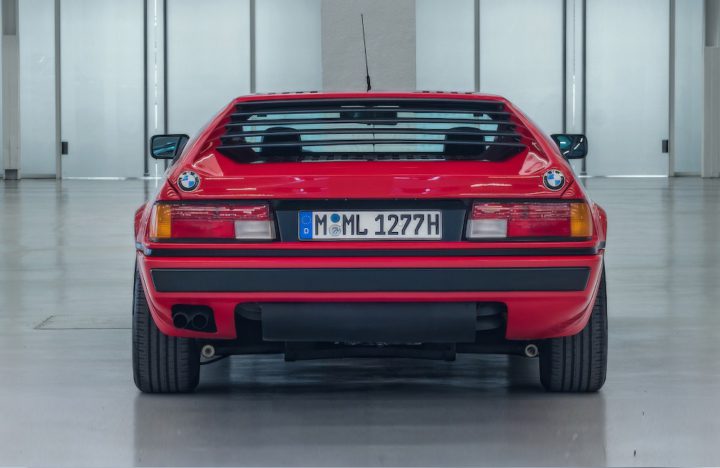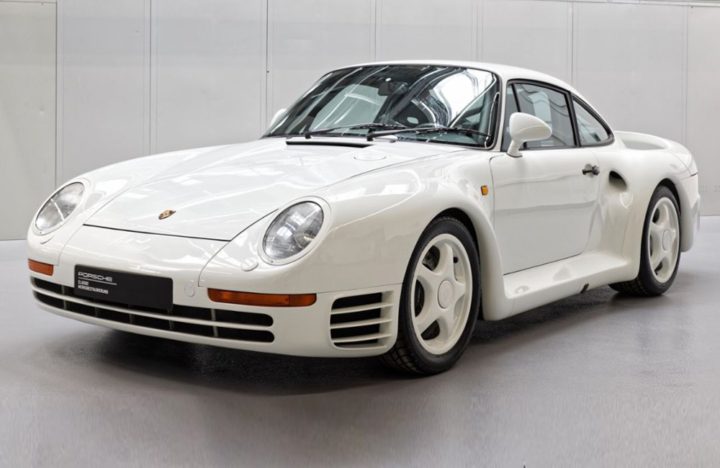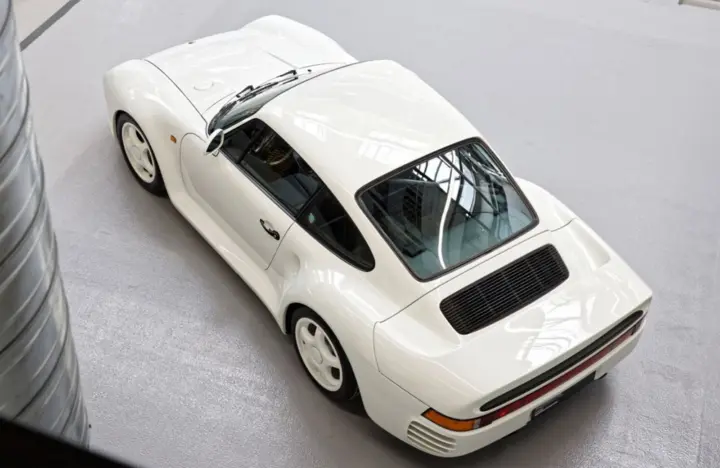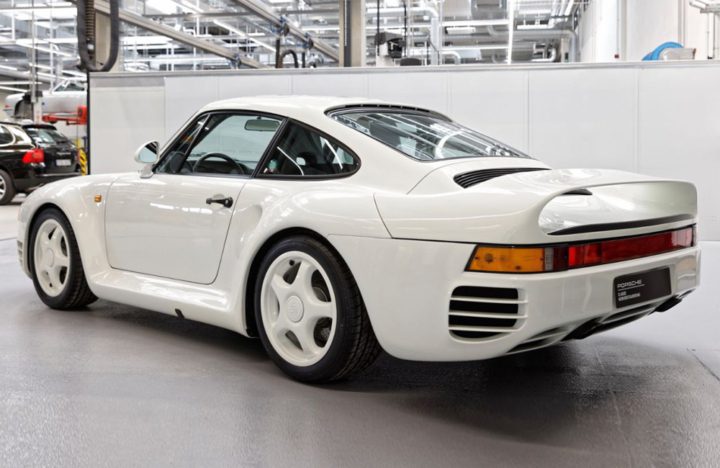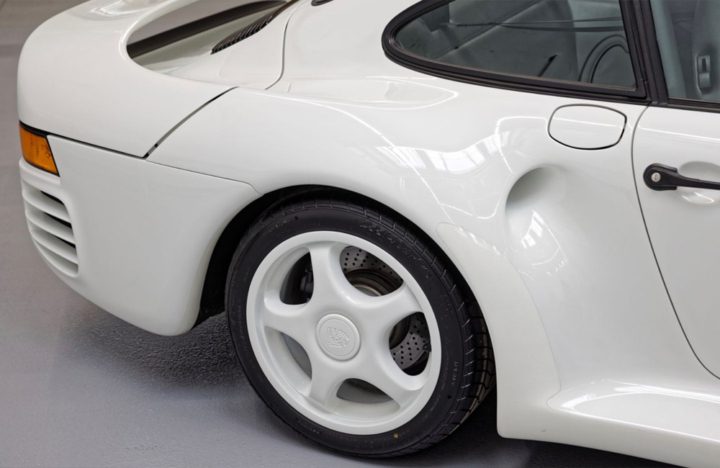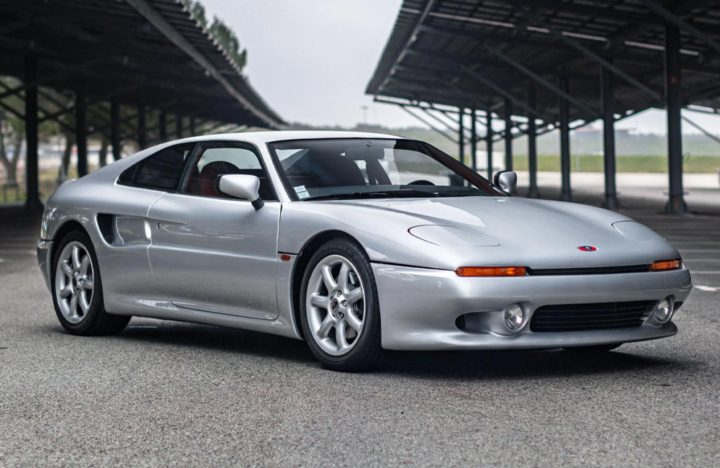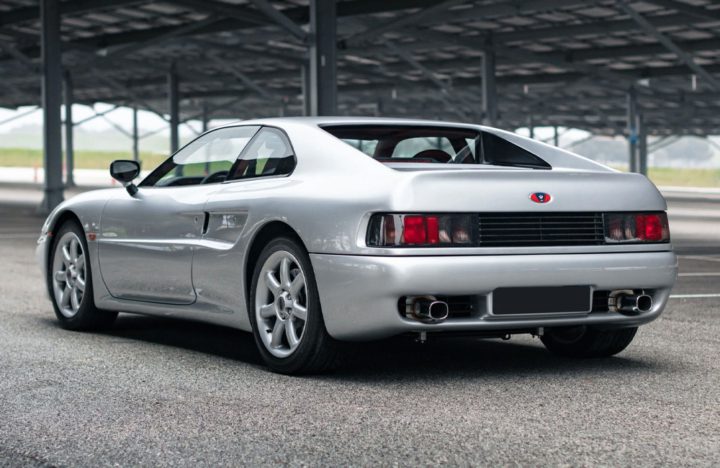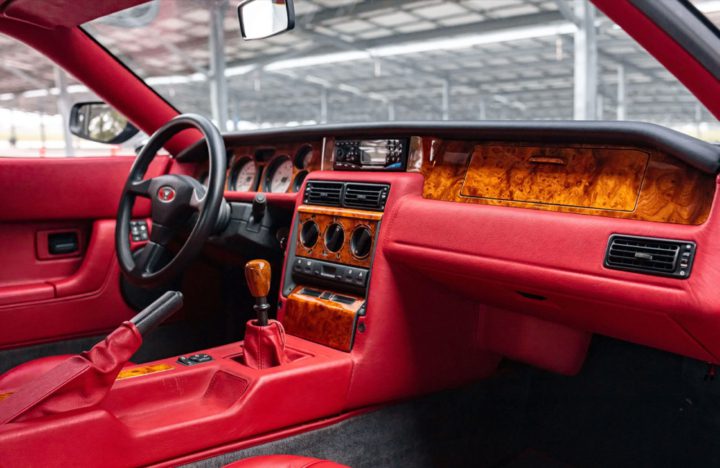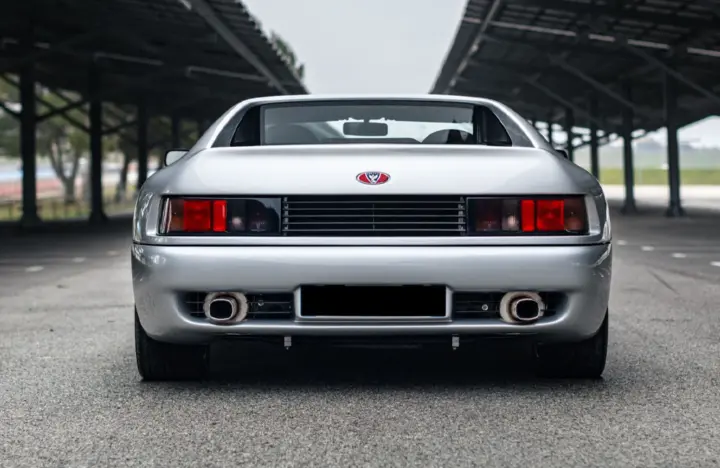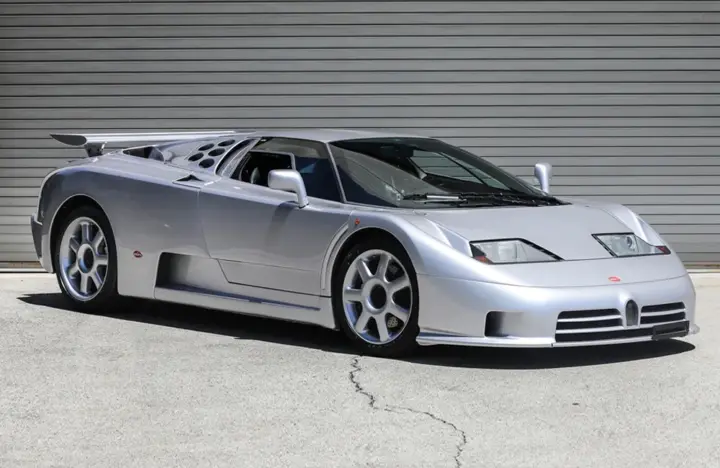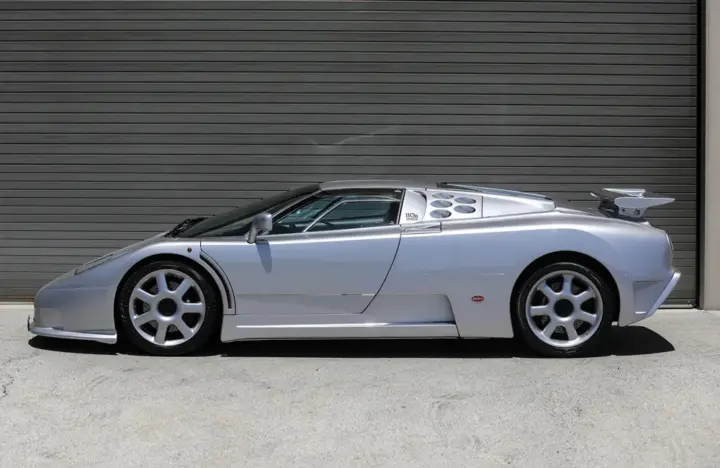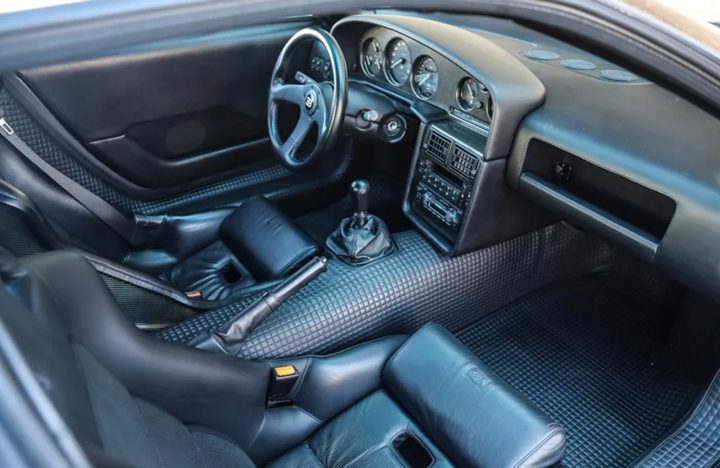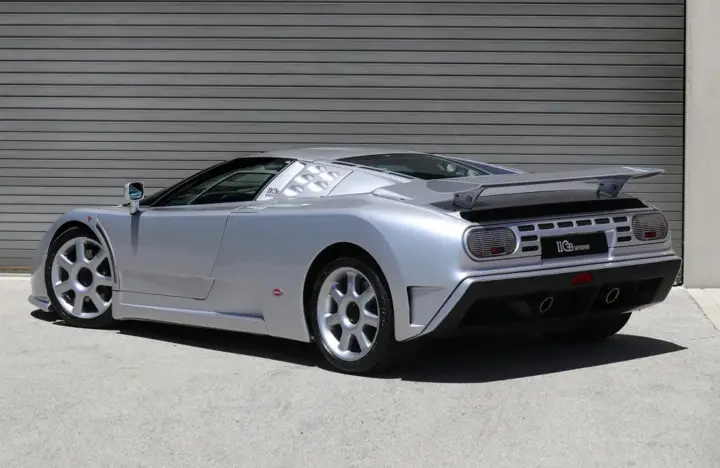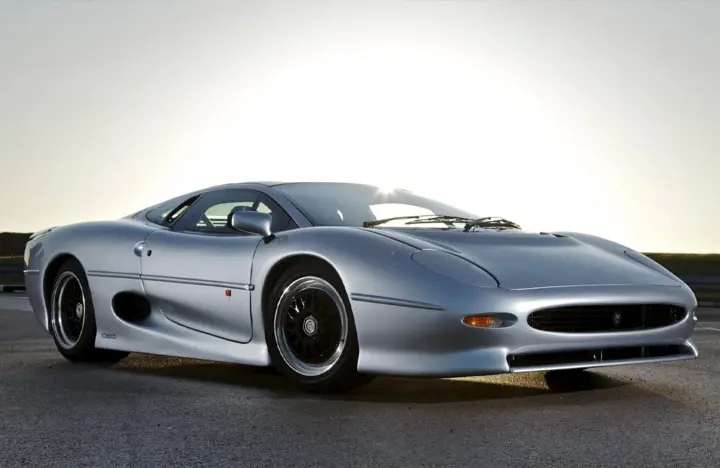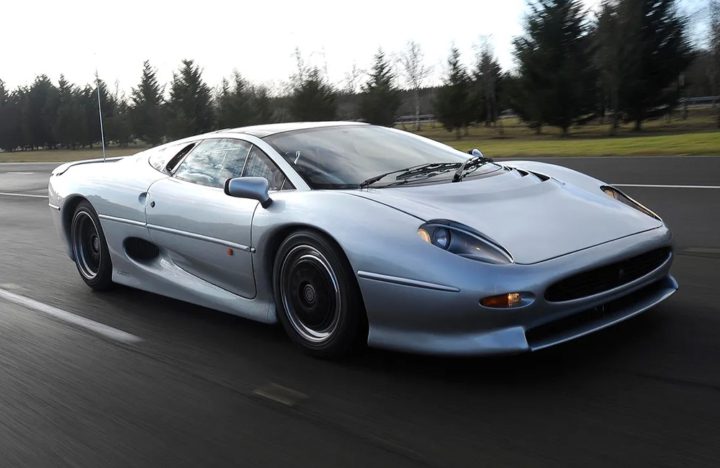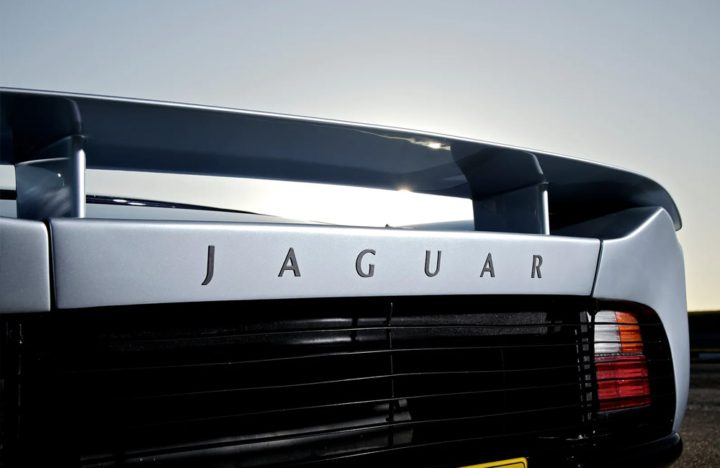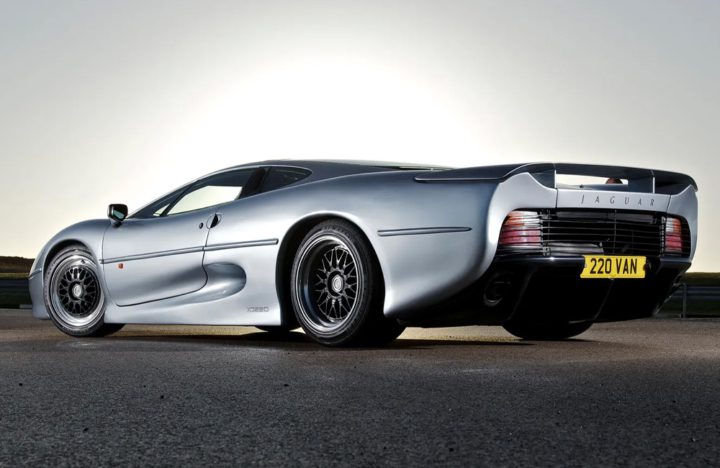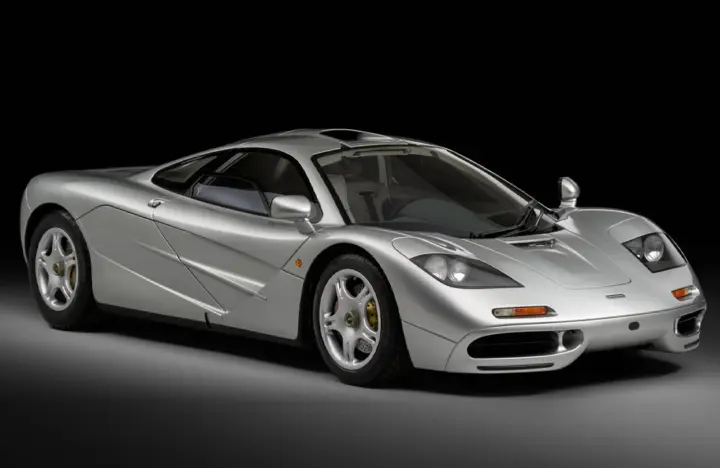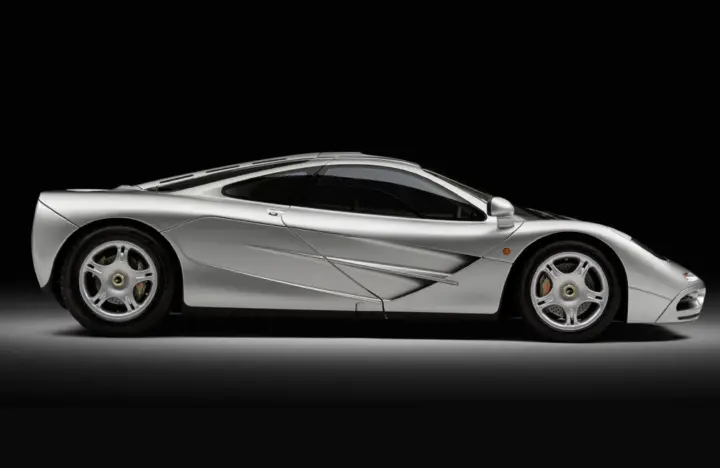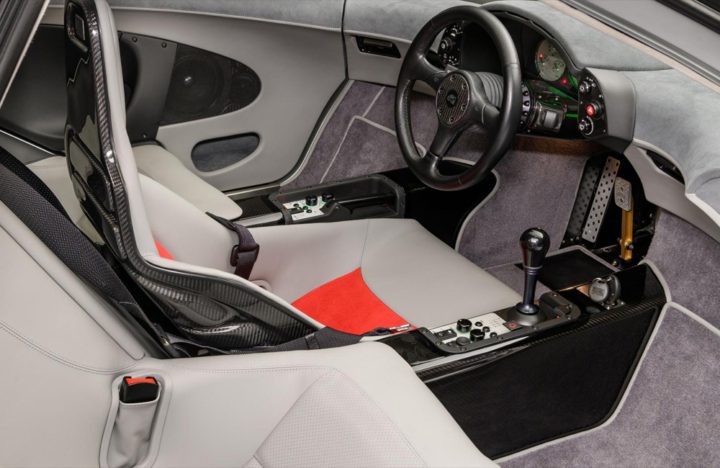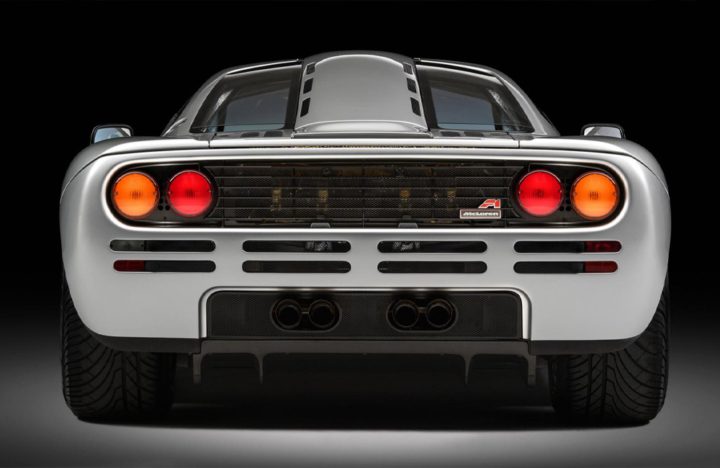8 Retro Supercars Any Petrolhead Should Know
Just like a Cartier Tank or Omega Speedmaster, some supercars will never go out of fashion. In fact, if you’re a somewhat more discerning supercar fan, several retro models will catch the eye more than even the most extreme 911 GT3 RS, SF90 or R8.
Here’s our comprehensive list of the coolest retro supercars – not vintage supercars – that have always been ultra cool, but are only getting more so in our increasingly digital world.
Turn up anywhere from a supercar meet-up to a five-star hotel in Mayfair and you’ll get instant respect from the diehards while slipping under the radar of the Instagrammer types.
Lamborghini Diablo VT
Images courtesy of: Bonhams Cars
Everyone knows the Countach, most recently hitting the pop culture jackpot when a somewhat inebriated Leonardo DiCaprio tried to exit a very white Anniversary model in the driveway of a New York State golf club. Yet the Countach is a fickle car – some purists will only see early LP400 Periscopo as the icon, while others prefer the big wings and slats of the later Anniversary models as seen in the films. But it’s the next model up the list that features here on its relative anonymity, and that’s the Diablo.
Introduced in the early 1990s as the almost impossible successor to Countach, Diablo took the notion of legendary designer Marcello Gandini’s wedge and modernised it. Gandini actually did pen the original sketches for the Diablo, but with Lamborghini changing hands multiple times in that period, the production car was tweaked by its then owners Chrysler before launching in 1990.
Like the Countach, the Diablo has many forms, and while its transformation over the years wasn’t as abrupt, true enthusiasts have their preferred era (as do we).
For us, the late Luc Donkerwolk-designed VT 6.0 which was introduced after Audi’s acquisition of the Italian brand in 1998 is the most iconic model. It may have lost the pop-up headlights, but it was arguably the most aesthetically successful of all the Diablos. Elements like the cartoon-esque rear wheels, with their monumental offset and relatively clean lines, only heightened the crazy proportions.
It also helped that by then, the Diablo’s driving experience had been polished to something approaching a usable supercar to drive, with a higher 557hp power figure and a clutch pedal that didn’t need gym time to make sure your right leg kept symmetrical to your left, so heavy was the clutch. And those headlights, which look so well integrated, weren’t a Lamborghini design but nicked from the Nissan 300ZX.
Ferrari F355
Images courtesy of: Ferarri magazine
A rung or two down the supercar ladder we find this, the stunning Ferrari F355. It’s worth mentioning that in the mid-1980s, Ferrari was not always creating surefire hits. The mid-engined 348, which was a core product in terms of sales and profits, wasn’t going well at all for the prancing horse and by the late 1980s had newcomers like the Honda NSX showing it up, not just in terms of performance but build quality, reliability and desirability too.
To compete, Ferrari launched a comprehensive update on the model, creating the F355 in 1994. As well as the design, which was thoroughly modernised by the design studio Pininfarina, Ferrari poured over every other detail, significantly upgrading the 3.5-litre V8 engine, revamping the interior and incorporating many design trends that would go on to remain in place for decades.
It also introduced the first ‘F1’ transmission, which replaced the open-gate manual with a paddle-shift arrangement. While it wasn’t always rated highly by drivers, it was a hit with customers, selling in huge numbers and widening the appeal of the entire car. Today, this makes the six-speed manual the more desirable model to own, and when you do, offers one of the most iconic Ferrari driving experiences.
The V8 engine’s high-pitched scream, matched to the stunning open-gate six-speed manual transmission, the iconic green glow of the cowled dials and compact design made the F355 Berlinetta, and its Targa-roofed GTS and open-top Spider cousins, a truly magical experience.
As one of the smaller and less showy models in the Italian marque’s lineage, this holds great appeal to true Ferrari enthusiasts, not just collectors, as it’s not so rare as to be daft to put miles on it. In our books, this is about as sophisticated as Ferraris get, especially when not painted in a typical Rosso Corsa livery.
BMW M1
Images courtesy of: BMW Magazine
There has been mention of two design greats in this list and here’s one more. Giorgetto Giugiaro is one of, if not the, most influential car designers of all time. Responsible for cars like the original VW Golf and Fiat Panda, not to mention generations of supercars from Maserati and Lotus, it was his short-lived time with BMW that created the iconic M1.
Originally designed and engineered for racing, it was meant to be built in partnership with Lamborghini, but it quickly turned sour due to the Italian brand’s deteriorating financials in the early 1980s. Despite this, BMW continued with the project anyway, employing Giugiaro to design this iconic supercar and fitting it with a stunning Paul Roche-designed 3.5-litre inline six-cylinder engine.
Put into production in 1977, each M1 was hand-built between Italy and Germany, with Dallara manufacturing the chassis and many of the body components before being shipped to BMW for its final assembly. Only 453 units were produced over a three-year period, which was just enough to put it over the minimum build number required for homologation. Unfortunately for BMW, the racing series was cancelled not long before the M1 was ready for production, forcing it to create a one-make ProAm racing series for the competition cars, which was used as a support race to F1.
As for the car itself, well if it were not for the BMW roundels and kidney grille, even many of the most enthusiastic car fans might struggle to place it. Yet as an example of the purity and brilliance of Giugiaro’s design, plus a unique and wonderful driving experience due to its racing car foundations, the M1 is one of the coolest supercars you could hope to own – something the values very much reflect today.
Porsche 959
Images courtesy of: Porsche
If the BMW M1 was un-German in its beginnings, the Porsche 959 was every bit the over-zealous engineering story so common from German brands. The 959 was also built to compete in motorsport, but this time Porsche had Group B rally in mind – a monumental task for a manufacturer more famous for sports cars than rugged rally cars.
The 959 did find an underlying foundation in the existing 911 of the time, but its elements weren’t just upgrades. Instead, they completely revolutionised modern supercar design, and in so created a platform for all those technologies to flourish today.
Just like the BMW M1 above, though, the 959’s motorsport ambition was cut short when Group B was cancelled on the grounds of safety. Yet that didn’t stop the car competing in Rally Raid events like the Paris-Dakar, where the Rothmans liveried car won outright in 1984. By 1986, the production version had arrived with much of the same state-of-the-art engineering and technology, creating an iconic road car.
The engine, now a twin-turbocharged version of the 2.8-litre flat six, produced 444hp. But arguably this wasn’t the most interesting part because power was sent to all four wheels in a complex all-wheel-drive system that might now be commonplace, but was incredibly forward-thinking back then. It also had other tech like height-adjustable suspension and a six-speed manual that would make it a true tour-de-force of supercar tech.
Some might say that its overall design isn’t quite as outlandish or innovative as others of the period, but it was incredibly aerodynamic, making the 959 capable of some staggeringly high top speeds – up to 211mph in the ultra-rare 959S – while its all-wheel-drive system made it just as impressive off the mark.
Today, the 959 is a connoisseur’s supercar – one that’s not the most flashy or beautiful, but a true icon.
Venturi Atlantique
Images courtesy of: Kevin Van Campenhout, Artcurial
If you’ve never heard of the Venturi Atlantique we wouldn’t blame you, but it’s impossible to compose a list of famous supercars without considering at least one French option. In this company, the Venturi Atlantique isn’t a technological yardstick, a road-going rally winner or a design icon. But it is, you might agree, a stunningly beautiful supercar that’s subtle, serene and a perfect example of quiet luxury.
The design was not penned by any famous designer or design house but took obvious inspiration from similarly-sized mid-engined cars around at the time such as the Ferrari F355. The overall proportions and window graphics looked very similar, with a slightly softer surfacing quality and more organic volumes.
Under the skin the two couldn’t be any more different, though, as in place of a high-revving V8 engine was a V6 engine borrowed from a joint-development unit between Peugeot/Citroen and Renault. Horsepower was a few rungs down on the Italian stalwarts, but Venturi eventually fitted two turbochargers to the engine giving it performance more akin to rivals, producing up to 310hp which helped it get to 62mph in a little over seven seconds.
However, like many low-volume supercar manufacturers, Venturi consistently struggled to secure both sales and funding for its future products, eventually creating the more track-focused 400GT which featured an F40-style static rear wing.
But it was the Atlantique 300 which we think is the sweet spot. Show up at any car meet or five-star hotel and the crowds might not instantly pick it as a little-known French supercar, but the gentle nod from the ones who do will be enough to make it all worth it.
Bugatti EB110
Images courtesy of: Mathieu Heurtault, Gooding & Company
Bugatti might be a brand known in the modern era for its groundbreaking high-speed models like the Veyron and Chiron, or long before that as a builder of pre-war Le Mans-winning racers and hand-crafted sports cars sold to the ultra-rich. But between those periods came the odd years, and one of the most strange (and ambitious) was that which created the EB110.
Despite a French founding, the Bugatti brand was purchased by an Italian entrepreneur Romano Artioli who went on to create Bugatti Automobili as an Italian entity in 1987. Development of a new supercar called the EB110 began, initially presented by none other than Marcello Gandini himself, designer of the aforementioned Countach.
The program was horrifically complicated, though, with the V12 engine featuring four turbochargers, a six-speed manual transmission and all-wheel drive. As with most supercars of the time, the chassis was initially to be built from a steel spaceframe, but somewhere along the line the project was changed to carbon fibre, prompting a full redesign even after it had reached the prototype phase.
The whole project was marred in disagreements between management, designers and engineers, with huge overspends, including a massively over-specced factory which featured a Carrara marble floor and a huge public launch at the Palace of Versailles.
Ultimately, the EB110’s somewhat dysfunctional birth would be too much for the brand, as despite launching in 1991 and remaining on sale until 1995, plus a high-profile sale to F1 legend Michael Schumacher, the Bugatti brand didn’t stay afloat.
Of course, with the company once again defunct it wasn’t long until Volkswagen (under the helmsmanship of Ferdinand Piech) offered to purchase the brand rights, subsequently creating the cars we know today.
Jaguar XJ220
Images courtesy of: GQ Magazine
One of the most iconic supercars of all time does not have a supercar brand’s name on it. Yet in the late 1980s, Jaguar was one of the most ambitious motorsport brands around, with success in sports car racing that saw it take a Le Mans win, later expanding into F1. For the road, however, front-engined, V8-powered saloons and coupes were the name of the game – until the XJ220 came along that is.
With the help of its motorsport partner Tom Walkinshaw Racing, Jaguar announced the XJ220 back in the late 1980s as a top-speed record-breaking supercar featuring a V12 engine, all-wheel drive and a stunning streamlined body. Once shown to potential buyers, deposits were placed and money exchanged, only for customers to later be told it wasn’t going to offer much of what it promised.
The V12 was swapped out for a very very highly-tuned V6 engine designed by UK-based engine builder Cosworth for the Metro 6R4 rally car. The all-wheel-drive system was ditched, too, prompting many customers to pull their allocation, sending the program into a further tailspin.
Yet from this adversity, Jaguar created a car that did indeed stop people in its tracks, and for many people that’s due to its otherworldly design. Penned by Keith Hellett under Jim Randle, it was styled to be a modern take on Jaguar’s Le Mans winners of the 1950s and 1960s. Except, unlike most supercars that are often smaller in the flesh than they appear, the XK220 was massive, sitting just shy of 5m long.
A total of 282 units were produced over two years, and at the time was the most expensive car in the world, fetching £470,000 back in 1992. Even now that seems like a lot of money, but then the XJ220 has an incredible sense of occasion and has earned a reputation today that makes it an ultimate supercar.
Oh, and despite not having the powertrain or four-wheel-drive system promised, it still broke the production car top speed record at 212mph, and a Nurburgring lap record, too. Not sure we’d classify that as a failure.
McLaren F1
Images courtesy of: Top Gear Magazine
No retro supercar list would be complete without the McLaren F1. In the car world, this is a Rolex Submariner, the Burberry trench or Chanel No.5 – a timeless car that at the time was without peer, but didn’t shout about it in the way an Italian or German supercar might. Like all the best supercars, the F1 was a vision from one immensely talented person, and that was former F1 engineer turned supercar maestro Gordon Murray.
The F1 was born from Formula 1-derived tech, but rather than being a racing car for the road, was instead designed to be the best supercar in history. And in many respects it was, thanks to a unique central driving position, a brilliantly light chassis and the very best powertrain elements that were possible at the time.
The V12 engine was a bespoke unit designed and built for the F1 by BMW and featured incredible innovations like its individual throttle bodies hidden underneath a carbon fibre intake plenum and a (literally) 24ct gold-lined engine bay.
Its numbers were equally impressive: it produced 627hp, which in today’s world doesn’t sound like much until you realise it only had to motivate 1,138kg. Yet the F1’s biggest impact was the record 240mph top speed it achieved, which was unmatched for decades.
To look at, the F1 was almost all business, but Murray did work with storied designer Peter Stevens for its exterior design, which was both elegant and timeless, despite the need to accommodate three inside and such an incredible set of abilities.
The F1’s aura has never diminished – this isn’t a forgotten supercar that’s come back into the limelight – and nor have its incredible achievements. Owners of this majestic supercar have varied from Elon Musk and Ralph Lauren to Lewis Hamilton and Jay Leno, and its absolute rarity has kept it at unattainable levels throughout its entire lifespan.
The car was so good that when it entered the Le Mans 24hrs in the late 1990s, it won outright with almost no modifications, despite having no intention of racing. It was an accidental Le Mans winner, which is ironic considering nothing was left to chance with the F1. This was, is and will continue to be, the ultimate supercar.
